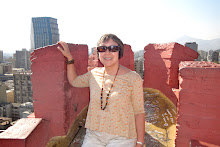Development of Currency in Thailand
Similar to other countries in the world, bartering or exchanging goods was the only way of trading in Thailand before the 1st century. Afterward, there was gradual progress of using media of exchanging from ancient beads or seeds, old coins, copper money, bullet money, new coins, printed paper notes to the present Thai Baht. There were many kinds of media of exchange in the period of early Kingdoms. Also, the three important Kingdoms were “Sukhothai”, from 13th - 14th century, “Ayutthaya”, from 14th – 17th century, and “Rattanakosin”, the Kingdom at the present time. In each period of time there was a change of currency as described in the following essay.
First of all, people in the time before the Kingdom during the 1st - 7th centuries usually used “Metallic coins” which originated from Funan Kingdom in Indochina. After that, the “Dvaravati coins” which came from the Kingdom of Dvaravati, existing from the 6th – 11th centuries. Then, various currencies with different appearance were used in Thailand: for example, “Sandal wood flower coins” or Dok Jan coins, cowrie shells, and baked clay coins. Before the beginning of Sukhothai period, the Kingdom of Lanchang introduced money in metal like silver and copper for trade in Thailand.
Secondly, dwellers in Kingdom of Sukhothai, located in the northern part of present Thailand normally used bullet money or “Pod Duang”. This type of money was composed of 89-95 percent silver and marked with the stamps of the King, the government, and the private silversmith. Each bullet money has various purposes for production and differences in shape and size. Pod Duang was first used in this period until Rattanakosin era. Therefore, this type of money had been utilized for over than 600 years, which makes it the most enduring currency in Thailand.
Moreover, Pod Duang as also used by people in the beginning and middle period of Ayutthaya Kingdom. Since the Thai government participated in the Bowring treaty in 1860 and trading with other countries increased, foreign currency like Mexican, Peruvian, Dutch, Chinese, metal as used to make coins so that The Royal Minting Department of Thailand forced re-stamping on all foreign coins taken into Thailand.
In the present era, the Kingdom of Rattanakosin, bullet money as outlawed at the beginning of this period because the silversmith could not provide enough coins due to high demands of foreign trade. The new types of money which were minted coins and paper notes were introduced into the country.After that, Queen Victoria of Britain the first made bank notes known to Thailand in 1857. The Thai government bought a minting machine from Great Britain. Nowadays, Thai modern currency was streamlined to 25, 50 Satang coins, 1, 2, 5, 10 Baht coins and 20, 50, 100, 500, 1,000 Baht bank notes.
It can be shown from these historical periods that Thailand’s currency has been developing for over than 1,000 years. The improvement of money in the country is mostly from trading and influence of foreign countries. Moreover, modern Thai currency can be used to purchase goods in many countries in the Asia Pacific region like Columbia, Laos, Myanmar, as well as India.
Sunday, October 12, 2008
Subscribe to:
Post Comments (Atom)

No comments:
Post a Comment